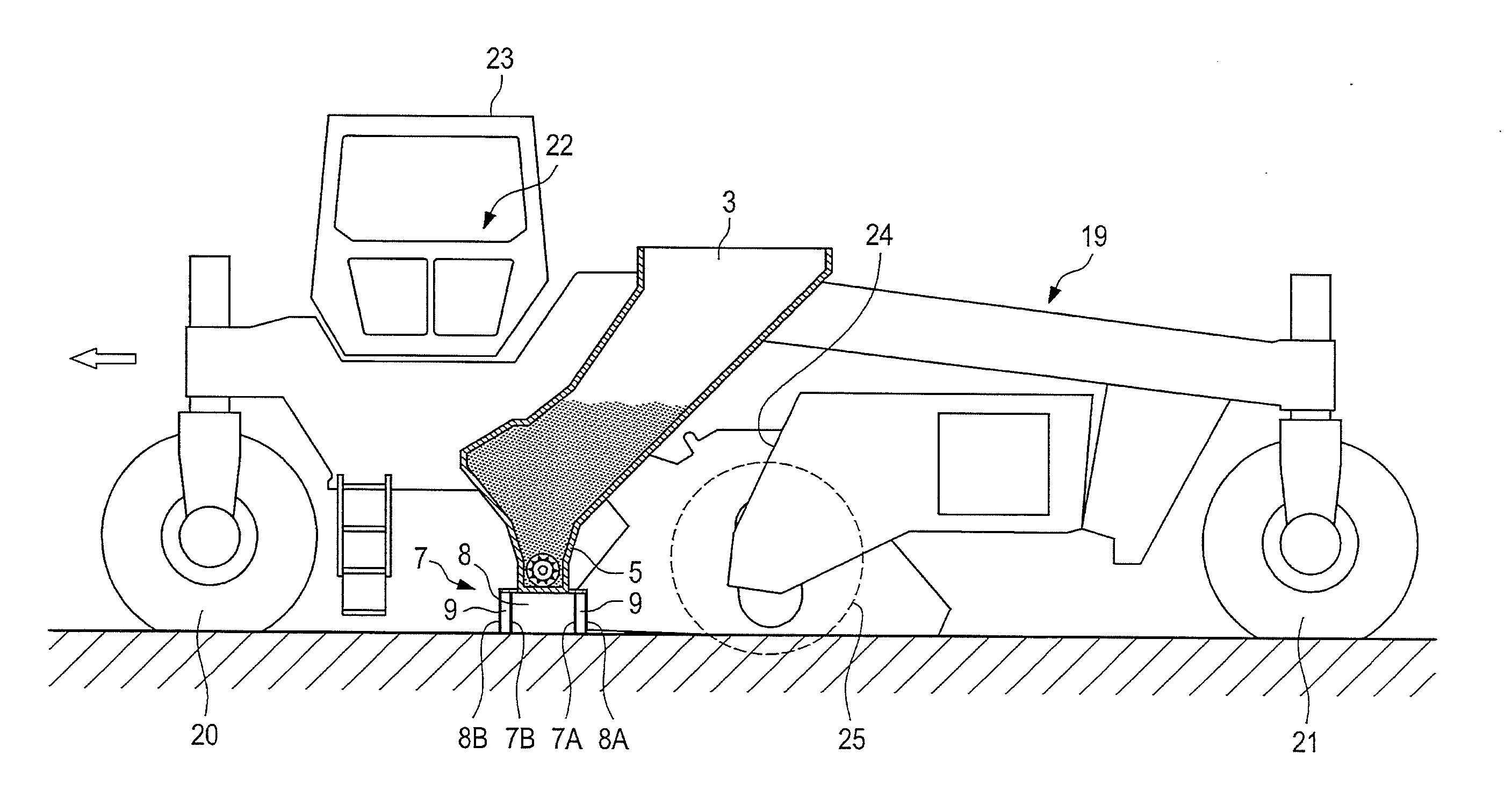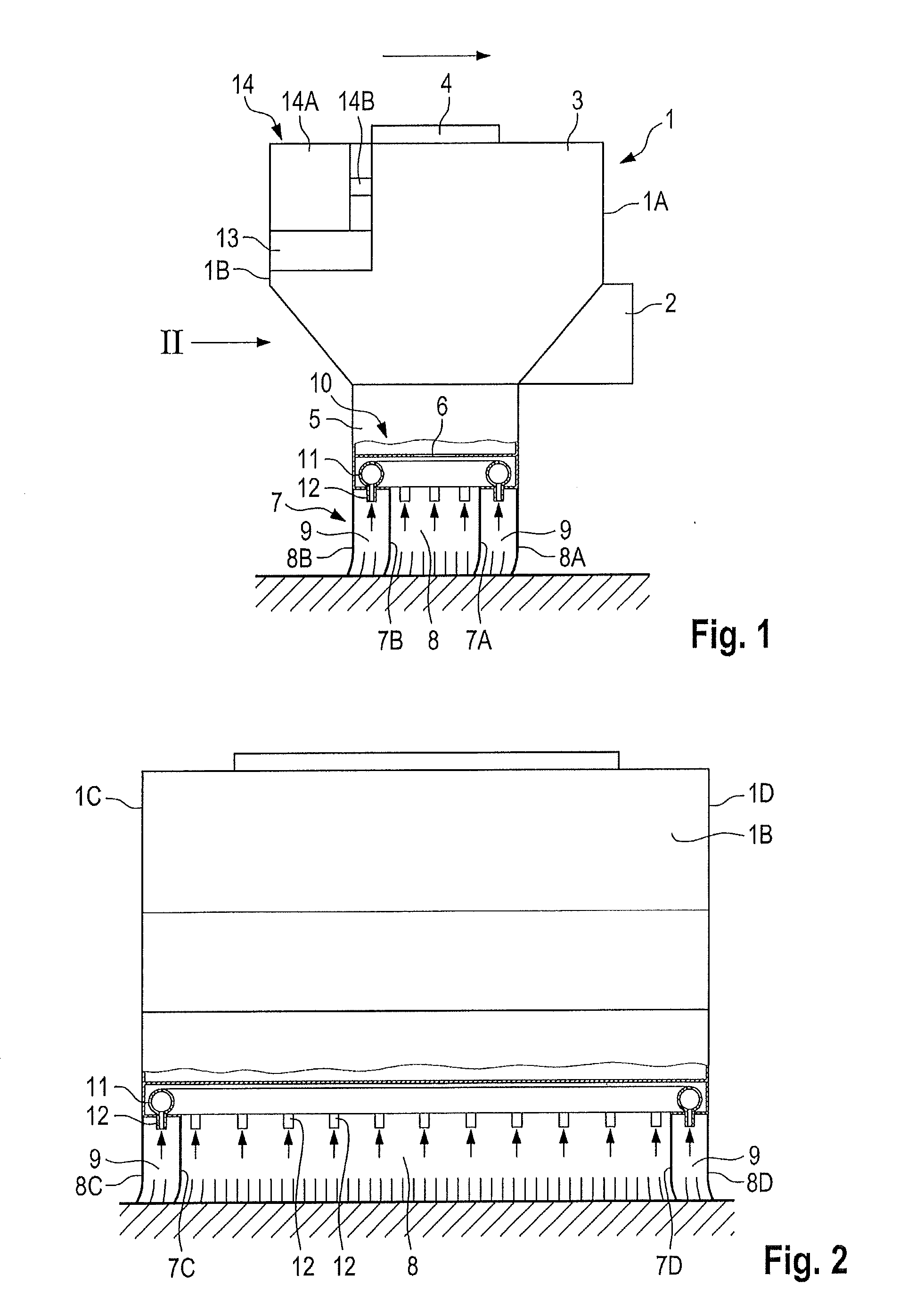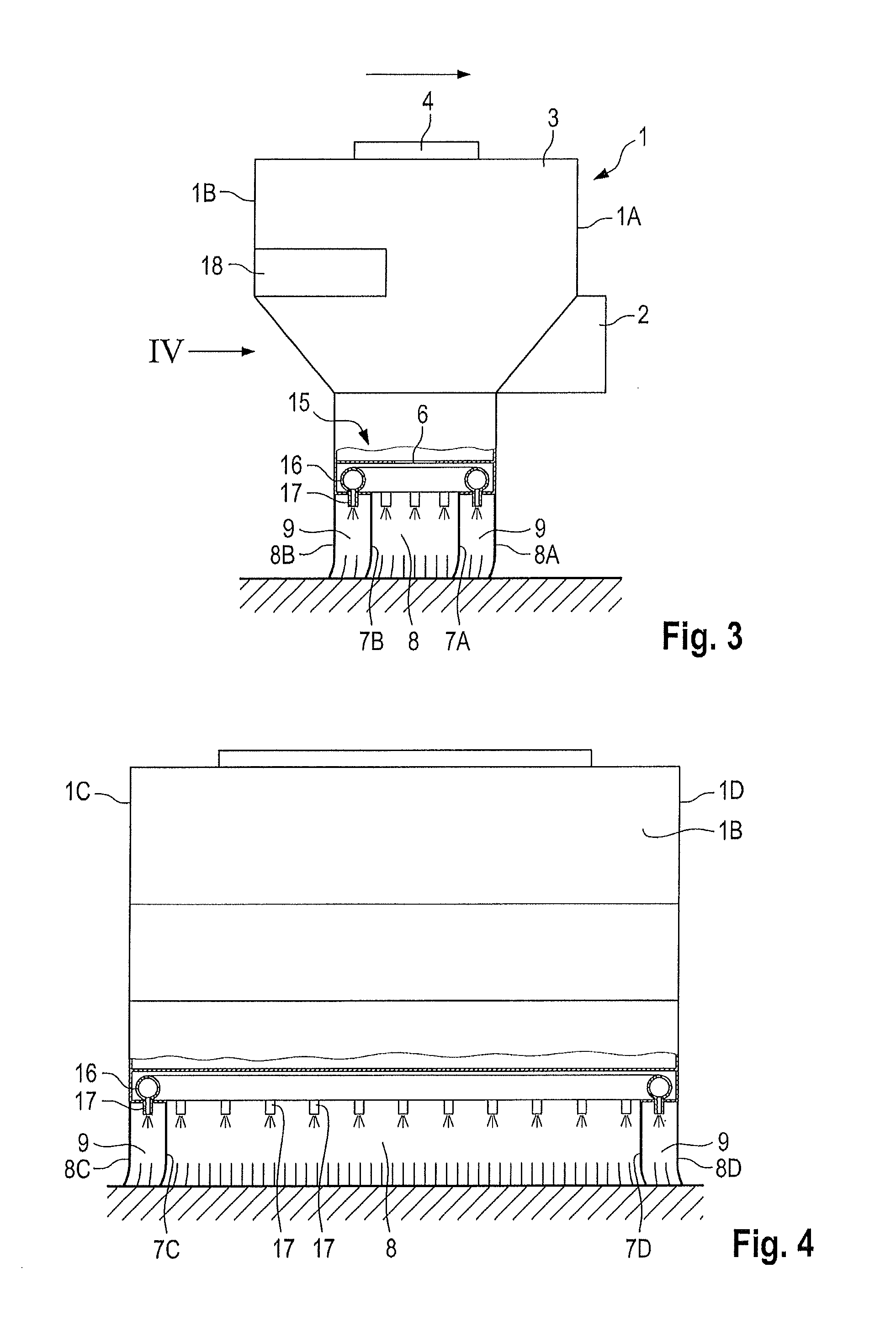Civil Engineering Machine For Spreading Material For Spreading On Soils Or Base Materials
a technology of civil engineering machine and soil, which is applied in the direction of manure treatment, roads, constructions, etc., can solve the problems of blown binder, dust production, and insufficient anti-dust arrangement of known civil engineering machine to stop dust production to an adequate degr
- Summary
- Abstract
- Description
- Claims
- Application Information
AI Technical Summary
Benefits of technology
Problems solved by technology
Method used
Image
Examples
Embodiment Construction
[0031]FIGS. 1 and 2 are highly simplified schematic views showing the main components of a non-self-propelled civil engineering machine for spreading binders for soil or base material stabilization, which will be referred to in what follows as a binder spreader. The binder spreader is mounted on a drawing vehicle (not shown), such as a tractor for example, which tows the binder spreader. The height of the binder spreader relative to the ground can be adjusted on the tractor.
[0032]The binder spreader has a substantially rectangular chassis 1 having a front wall 1A which is at the front in the direction of travel, a rear wall 1B which is at the rear in the direction of travel, and two side walls 1C and 1D. The mounting of the binder spreader on the tractor in such a way as to be adjustable in height is effected by means of a mounting means 2 at the front end of the chassis 1.
[0033]To receive the binder, the binder spreader has an enclosed container 3 for material for spreading which h...
PUM
 Login to view more
Login to view more Abstract
Description
Claims
Application Information
 Login to view more
Login to view more - R&D Engineer
- R&D Manager
- IP Professional
- Industry Leading Data Capabilities
- Powerful AI technology
- Patent DNA Extraction
Browse by: Latest US Patents, China's latest patents, Technical Efficacy Thesaurus, Application Domain, Technology Topic.
© 2024 PatSnap. All rights reserved.Legal|Privacy policy|Modern Slavery Act Transparency Statement|Sitemap



